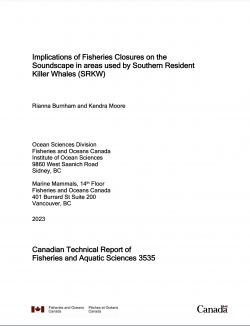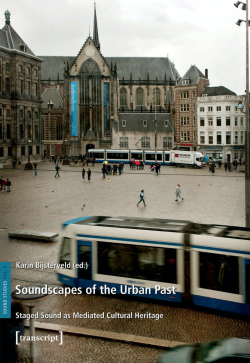Temporal patterns in the soundscape of the port area in an urban estuary

Type
Journal
Authors
Category
Article
[ Browse Items ]
Publication Year
2024
Publisher
URL
[ private ]
Volume
297
Pages
108596
Abstract
Soundscape ecology, facilitated by the collection of environmental sounds, enables the determination of the area used by specific species, estimation of population abundance, verification of habitat health, and assistance in management and monitoring processes. Estuaries are key environments in the life cycle of many species. As coastal ecosystems, they face potential impacts by human activities. This study aims to characterize the soundscape of the Patos Lagoon estuary (PLE), Brazil, examining its temporal and seasonal variations. Additionally, it seeks to investigate the influence of temperature and salinity on sound pressure levels (SPL) across three different frequency bands throughout the year. For data collection, two autonomous devices - a SoundTrap digital recorder and an F-POD sampler - were used. The data collection spanned from September 2020 to August 2021 and covered one consecutive week per season. The analysis of audio files was performed manually using Raven software. Sound emissions by Lahille's bottlenose dolphin (Tursiops truncatus gephyreus) and fish were observed throughout the sampling period, with peak detections occurring during the summer and spring, respectively. Boat noise was detected throughout the year but more intensely in the summer. Generalized linear models (GLMs) revealed that, for the three SPL frequency bands, the season significantly influenced the composition of the PLE soundscape, with positive fluctuations in the warmer seasons (summer > spring > autumn > winter). Salinity, in turn, showed a slightly negative relationship with the SPL values in the three models, suggesting a decrease in frequencies with increasing salinity. Our results also indicate that the low-frequency SPL, originating mostly from various sources of anthropogenic noise, constitutes the main component of the PLE soundscape. In conclusion, our study provides novel insights into the temporal patterns of the soundscape in an urban estuary, including biotic and anthropogenic sounds, and their relationships with selected environmental variables.
Description
https://www.sciencedirect.com/science/article/pii/S0272771423003864
Number of Copies
1
| Library | Accession No | Call No | Copy No | Edition | Location | Availability |
|---|---|---|---|---|---|---|
| Main | 758 | 1 | Yes |


